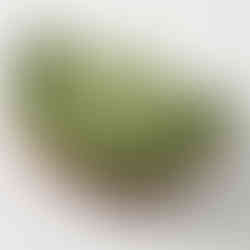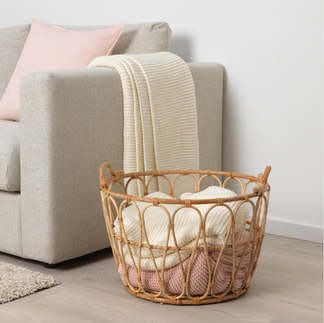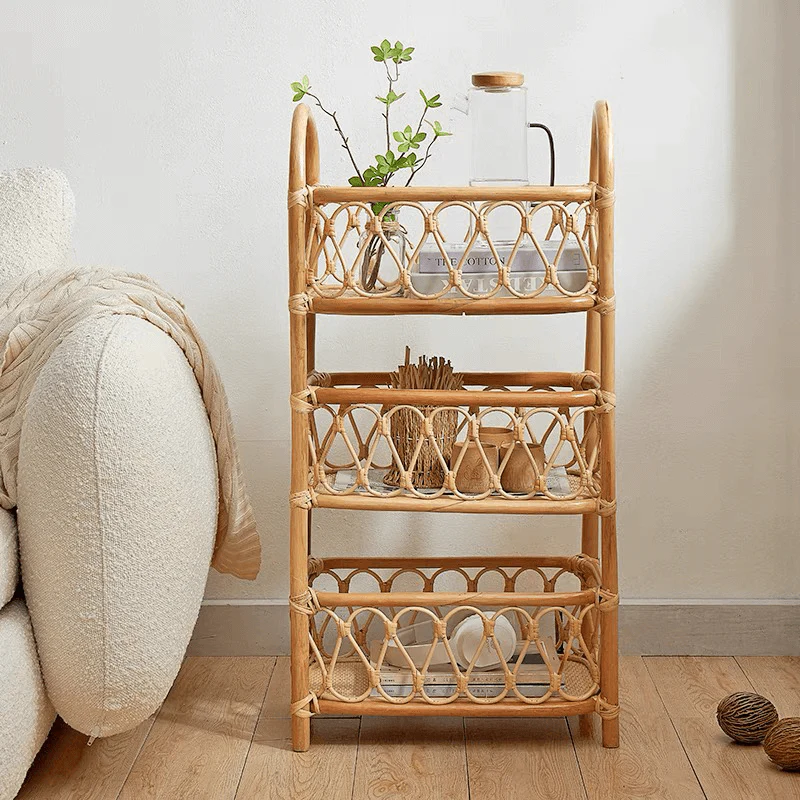4 Popular Weaving Styles for Rattan Handicraft Products
- Thu Uyên Đỗ
- Oct 17, 2024
- 4 min read

Rattan, often referred to as the 'climbing palm,' is one of the most versatile and sustainable materials found in tropical regions, particularly in Southeast Asia. With its lightweight, flexible, yet incredibly durable structure, rattan has been used for centuries to craft a wide array of products, from furniture and baskets to intricate home décor items. Unlike timber, which requires cutting down entire trees, rattan grows rapidly as a vine, making it an eco-friendly alternative in furniture production and handicrafts.
While naturally strong and rigid in its raw form, when steamed, rattan becomes highly pliable, allowing it to be bent into intricate designs without compromising its structural integrity.
However, not all rattan varieties are suited for weaving or furniture making. Some species are too brittle or have too many spines, making them difficult to work with. The best quality rattan is typically harvested from thin, long, straight vines with few spines and a high level of flexibility. These vines are ideal for crafting intricate patterns that are both lightweight and durable. For centuries, rattan has been used to create items such as chairs, tables, storage containers, and even building materials in some cultures.
Over the centuries, the traditional methods of harvesting and processing rattan have remained largely unchanged. However, the growing demand for eco-friendly, sustainable materials has boosted rattan’s popularity in global markets.
Types of Rattan Used in Production
Rattan is harvested from the wild, where it grows in dense forests. Once collected, the rattan canes are processed into two distinct components: the rattan core and the rattan skin (peel).
Rattan Cane: After harvest, rattan canes are divided into two parts: the rattan core and the rattan skin. The rattan core is the inner, woody part of the cane, while the rattan skin is the outer layer. Some species of rattan, with thinner, pliable stems (below 10mm), are woven into baskets without removing the skin.
Rattan Core: This is the woody inner material of the cane. After harvesting, the rattan core is extracted and split into thin, round strands. These strands are highly valued for their flexibility durability and resistance to deformation over time, making them ideal for producing sturdy, long-lasting handicrafts.
Rattan Skin: The outer layer of the cane, or rattan skin, is peeled off and cut into flat strands. This component is used in various applications, including weaving baskets, binding joints in furniture, and creating rattan webbing. Rattan skin is valued for its durability and flexibility, and it resists molding, making it a preferred choice for many practical and decorative uses.
Large-diameter rattan canes (above 18mm) are primarily used in furniture production due to their robustness, while smaller-diameter canes (below 18mm) are favored for handicrafts and decorative items. Understanding these characteristics helps in selecting the right type for specific applications, whether it’s for creating robust furniture or intricate handicrafts.
4 Popular Weaving Styles for Rattan Handicraft Products
1. Plain Weave (Wicker)

Plain weave, often called the ‘wicker’ style, is a popular basket weaving technique seen in many rattan baskets and homewares. In Vietnam, producers use rattan core and skin to create the basket’s structure, sometimes adding wooden or metal frames for extra durability. Metal frames are especially helpful for creating more intricate shapes and ensuring the baskets hold their form.
This weaving style gives a simple, rustic look and can be molded into various sizes and patterns. It's commonly used for items like animal-shaped baskets and other detailed designs, known for being durable and mold-resistant.
With the sturdiness of the plain weave, plain weave rattan baskets are ideal for a range of storage needs. They can be used for organizing laundry, storing items in closets, hanging in the kitchen, or holding plants, among other practical uses.
2. Coiling

Coiling weave is a technique where round rattan core strands are tightly coiled to form a sturdy basket. To secure the rattan in place, local artisans use either nails or flexible threads like fern and rattan skin.
Coiled weave baskets come in a variety of colors, sizes, and shapes, including oval, rectangular, and triangular. In Vietnam, producers often mix coiled rattan with other materials, such as ceramics or mother of pearl, to create uniquely beautiful products.
Rattan baskets made with the coiling technique offer stylish and versatile storage solutions for any setting. They are eco-friendly, user-safe, and practical for carrying bread, snacks, and fruits, as well as displaying small items such as jewelry, cosmetics, and keychains, or storing blankets and towels.
3. Cane Webbing Weave

Octagonal plaiting involves weaving rattan strips in an octagonal pattern, creating a geometric and structured look. This technique is known for its clean lines and distinctive appearance, setting it apart from other weaving styles.
4. Open Cross Weave

The open cross weave rattan weaving style is a traditional technique used in crafting rattan baskets, known for creating a light, airy structure while maintaining durability. This technique involves using thick rattan strands to form a sturdy frame, while thinner, more flexible strands are woven around the frame to build the intricate, open-weave design. To ensure the stability of the weave, pliable threads such as fern or rattan skin are often used to bind cross joints.
The open cross-weave design creates a ventilated structure, making it ideal for items that benefit from airflow, such as laundry, blankets, and clothes. This style helps prevent moisture buildup, reducing the chances of mold development. The open cross weave is versatile and can be applied to various shapes and sizes, though it is especially popular in round baskets. These baskets are both functional and decorative, perfect for organizing spaces by storing items like books, toys, and logs, while also enhancing the aesthetic appeal of a room.














































































